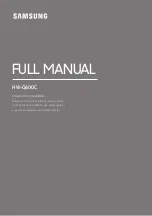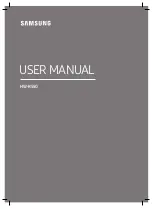
KF760 Series Rigging Procedures PRELIMINARY DRAFT -- 21 Aug 01
KF760 Series Rigging Procedures PRELIMINARY DRAFT -- 21 Aug 01 Page 4 of 29
WARNING: The array should always be level side-to-side. This should be monitored and adjusted
as needed throughout the rigging procedure to prevent the array from swinging sideways as the
array s weight is being taken by the chain motors. Personnel near the array must be aware that
this can and will happen and should position themselves appropriately to prevent injury or death.
CAUTION: During the following procedures, insert
all
short connecting pins from the inside of the
Hinge Tubes. Inserting the pins from the outside of the enclosure into the Hinge Tubes can and
will result in jammed pins. This is because the hole dimensions and clearances are not designed
for inserting the pins in this direction.
IMPORTANT NOTE:
With the exception of connecting pins used to lock the hinges, connecting pins
should be inserted into one of the bottom holes of each enclosure s four hinge tubes. This is true whether
the enclosure has anything attached beneath it (another enclosure or a pallet) or not. Failure to follow
this rule will result in either lost connecting pins or connecting pins not available when and where they are
needed during load-in and load out procedures.
IMPORTANT NOTE FOR SPLAYED ENCLOSURES:
Two of the six short connecting pins supplied with
each KF760 and KF761 are intended as hinge locking pins when the rear of the enclosures are splayed
and the Pull-Back Bar is used. Normally gravity keeps the rears of splayed enclosures apart, thus
maintaining the splay. When a Pull-Back Bar is used, it creates an upward force on the rear of the
enclosures, tending to push the rears of splayed enclosures together, thus collapsing the splay.
The solution is to lock the hinge in the top of the bottom enclosure between any two splayed enclosures.
To do this, insert a connecting pin into the top hole of the each rear Hinge Tube and through the bottom
of the hinge. This prevents the hinge from moving back down into its own Hinge Tube when an upward
force is applied to the rear of the enclosure. When enclosures are tight-packed using the Pull-Back bar,
the hinge locking pin is not needed.
2.1
PICK POINTS
Establish and rig the two pick points for the array with chain motors rated for the load.
If a pull back is used, establish and rig three pick points with chain motors rated for the load.
2.2
FLY-BAR ASSEMBLY
1. The Fly-Bar is assembled by attaching the Spreader to the Rigging Bars. Use two long connecting
pins at each end of the Spreader to attach it to the Hoisting Ring collets. If the pull-back Tail Bar is to be
used, insert the Tail Bar arm into the sleeve in the center of the Spreader and secure with two long
connecting pins.
2. The front-to-back Spreader position is determined by using the KF760 Wizard software. Position the
Spreader Bar as indicated by the Wizard.
3. Attach the Fly-bar to the chain motors using the two hoisting rings on the Rigging Bar.
Ensure the Hoisting Ring Collets are attached to the Rigging Bar with two long connecting pins each.
Ensure the Spreader is attached to the Hoisting Ring Collets with two long connecting pins at each end.
2.3
LOAD IN
2.3.1
First KF760 Pallet






































